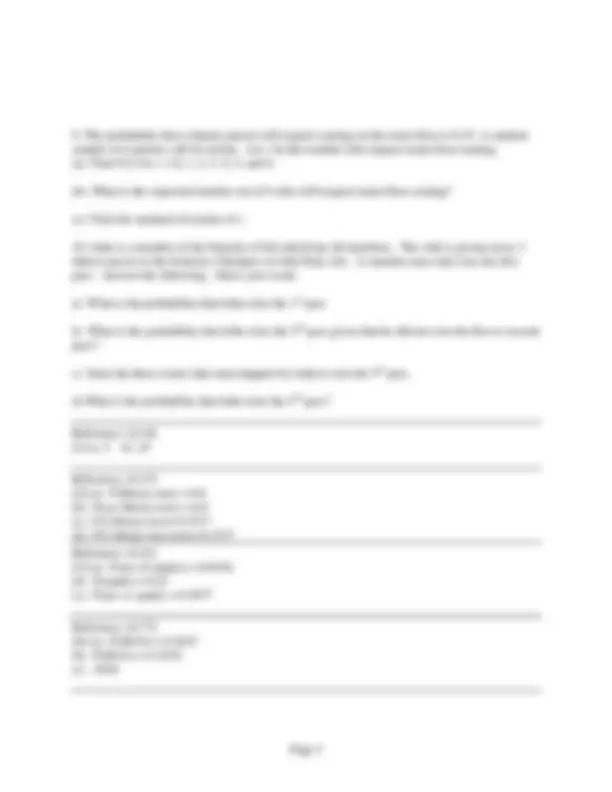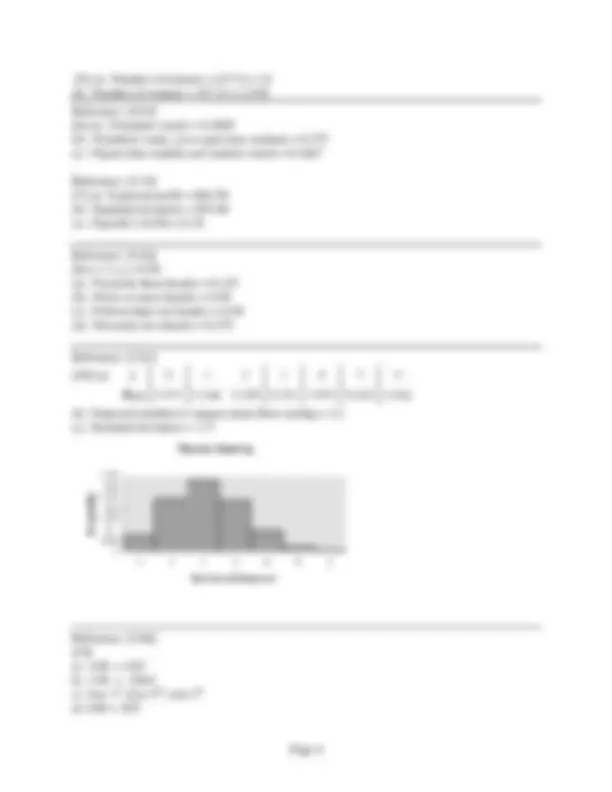




Study with the several resources on Docsity

Earn points by helping other students or get them with a premium plan


Prepare for your exams
Study with the several resources on Docsity

Earn points to download
Earn points by helping other students or get them with a premium plan
Community
Ask the community for help and clear up your study doubts
Discover the best universities in your country according to Docsity users
Free resources
Download our free guides on studying techniques, anxiety management strategies, and thesis advice from Docsity tutors
Material Type: Quiz; Class: Introduction To Statistics; Subject: Mathematics; University: East Georgia College; Term: Spring 2009;
Typology: Quizzes
1 / 4

This page cannot be seen from the preview
Don't miss anything!



Math 1121 Quiz 2 More Practice
Name: Last __________________, First __________________
Please show all work for maximum part credit.
a) What is the probability that the 785th toss is heads?
b) What is the probability that the first and 20th tosses are both heads?
(b) What is the probability that a student chosen at random from the class uses the library less often than twice a week?
(c) If two students are chosen at random from the class what is the probability that both of them use the library at least twice a week?
(d) What is the probability that neither of them uses the library at least twice a week.
(a) What is the probability that the card is the ace of spades?
(b) What is the probability that the card is a spade?
(c) What is the probability that the card is an ace or a spade?
(b) You draw two balls from the urn but do not replace the first ball before drawing the second. Find the probability that the first ball is red and the second ball is green.
(c) You draw two balls from the urn but do not replace the first ball before drawing the second. Find the probability of getting a red and a green ball in any order.
(b) If the five scholarships are all different in value how many ways can the five winners be chosen?
If a student is selected at random from this group of 90 students, find the probability that: (a) The student voted in the most recent election.
(b) The student voted in the most recent election, given that the student is a part-time student.
(c) The student voted in the most recent election and the student is a part-time student.
(a) Find the expected value (mean) of the profit in a $1,000 portfolio.
(b) Find the standard deviation of the profit.
(c) What is the probability of a profit of $150 or more in a $1,000 portfolio?
(b) Find the probability of getting two or more heads.
(c) Find the probability of getting fewer than two heads.
(d) Find the probability of getting exactly two heads.
[5] (a) Number of winners = C (7,5) = 21 (b) Number of winners = P (7,5) = 2,
Reference: [4.83] [6] (a) P (student voted) = 0. (b) P (student voted, given part-time student) = 0. (c) P (part-time student and student voted) = 0. . Reference: [5.33] [7] (a) Expected profit = $82. (b) Standard deviation = $55. (c) P (profit ≥ $150) = 0.
Reference: [5.64] [8] n = 3, p = 0. (a) P (exactly three heads) = 0. (b) P (two or more heads) = 0. (c) P (fewer than two heads) = 0. (d) P (exactly two heads) = 0.
Reference: [5.81]
[10] (a)
(b) Expected number to request main-floor seating = 2. (c) Standard deviation = 1.
Reference: [5.86] [10] a) 1/40 =. b) 1/38 =. c) lose 1st, lose 2nd, win 3rd d) 1/40 =.